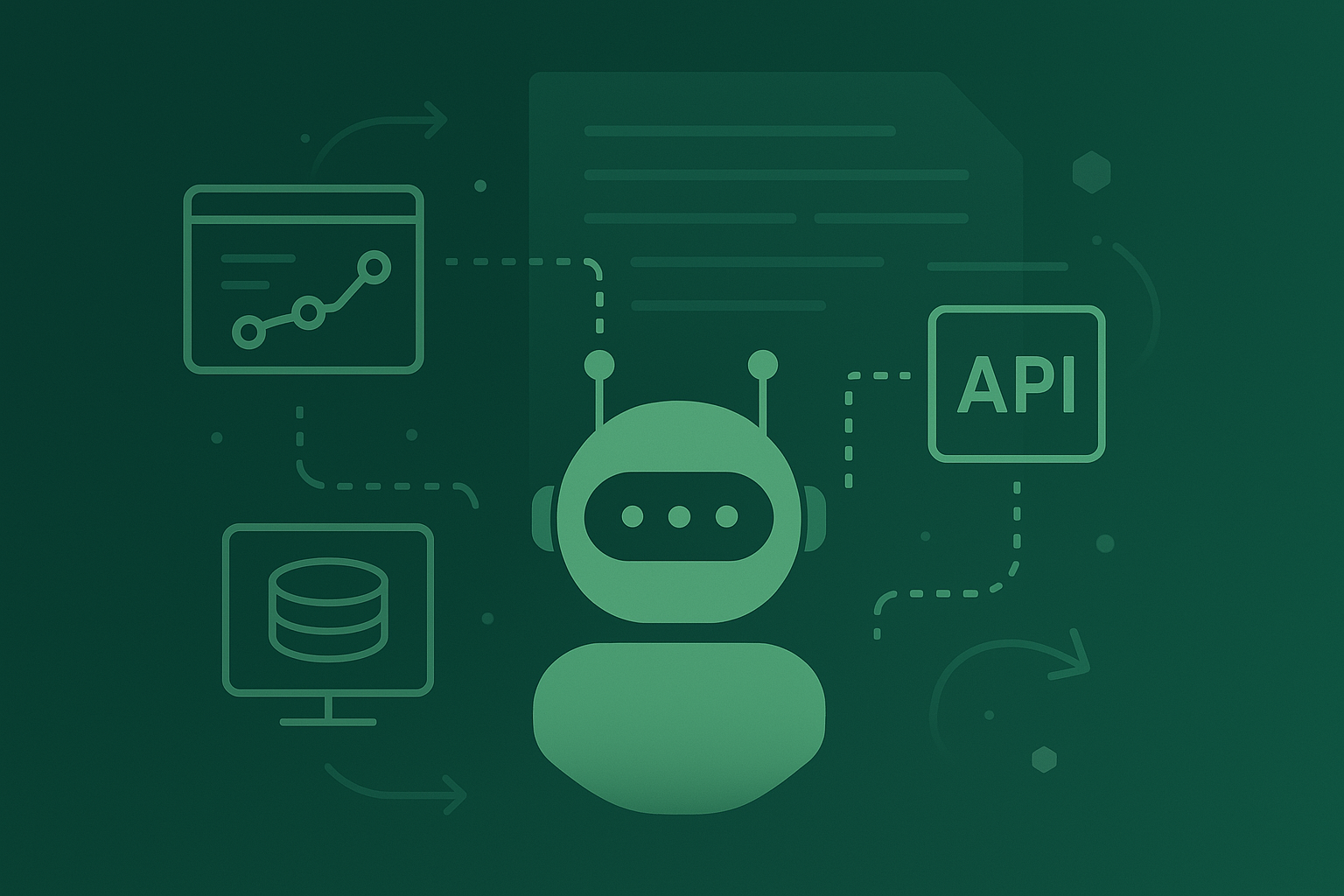The term “agentic” has quickly become the latest buzzword in tech. These days, it feels like you're either part of the agent craze - or you're already being left behind.
We’re in an era where “let AI do it” has become the default mindset. There’s a growing push to offload as much work as possible to AI and autonomous agents, often without pausing to question the trade offs. The unspoken goal seems to be full autonomy: agents that handle everything end-to-end, no humans required.
One of the most exciting developments enabling this vision is MCP - Model Context Protocol. If you’re plugged into the world of generative AI and haven’t heard of it yet, you might have been living under a rock.
MCP is a protocol introduced by Anthropic. It allows agents to communicate with a wide range of tools, APIs, and data sources. Think of it as an interface that lets agents dynamically pull in relevant context at runtime - a sort of context-layer API for LLM-based systems.
When you're experimenting or building something for personal use, the possibilities feel endless. But when you start introducing agents and MCP into real products - especially customer-facing features - you need to proceed with care.
That shift from POC to production brings a whole new set of responsibilities. It’s no longer just about whether the agent works - it’s about whether it’s reliable, safe, aligned, and accountable. You need to think about failure modes, degraded experiences, edge cases, and how the system will behave with an unexpected input. And most importantly, how you’ll even know when something’s gone wrong.
Because here’s the thing: if you’re not monitoring the data being fed into your AI systems, it’s no different than leaving any other critical part of your infrastructure unmonitored.
Would you wait for a customer to tell you your servers are down before acting? Probably not. So why would you wait for someone to report that your agent is taking incorrect, or even dangerous actions inside your organization, all because it was operating with a broken or outdated context?
Production-grade AI requires production-grade thinking. That means observability, validation, safeguards, and responsibility - especially when your product decisions are being influenced by a system operating on live data.
And even if you’re not a day-old-vibe-coder and you know how to test your data, ensuring quality in the agentic era is entwined with another challenge- With agents, you need to look at the quality of your data, in context, in motion:
1. Data quality is the foundation of reliable reasoning
To ensure reliable reasoning, the whole exchange needs to be proactively examined, not just the final decision.it’s not just about formatting or completeness -it’s about whether the agent can reason correctly. That means assessing not only the final output, but the full picture behind it:
Is the agent consuming data that accurately represents reality?
Is the data available as expected?
Did the response reflect an accurate, context-aware answer to the actual question?
Traditional monitoring thinks in thresholds - agent monitoring demands judgment.
You’re not just asking "Did it return an answer?" You’re asking "Was that answer appropriate, coherent, and aligned with the intent?"
In many cases, you're evaluating behavior the same way a human reviewer would - asking does this make sense here?
That kind of monitoring requires semantic understanding, contextual awareness, and real-time evaluation that mimics human reasoning. It’s a whole different level of observability.
2. It’s not just what was said, it’s when and why it was said
In systems using protocols like MCP, where context windows are explicitly constructed and passed between agents, understanding when information was introduced and what context was overwritten becomes essential to behavior interpretation.
A message might be perfectly valid on its own - but without context, it can appear irrelevant or misaligned. To make sense of it, you need to know:
What task triggered this data consumption
What context the agent had at the time
How other agents reacted to it
Monitoring only the output isn't enough to tell us what's “right” or “wrong” - because without context, meaning gets lost. Just like there's nothing inherently wrong with the word “tomato”, or even classifying it as a fruit, it becomes a problem when it shows up in a fruit salad recipe. Without knowing what the agent knew and why it responded the way it did, we can’t reliably judge its behavior.
3. Static metrics can’t keep up with dynamic conversations
In traditional systems, you can define fixed thresholds and alerts - but in the world of AI agents, data must be monitored in motion. Why?
Agent behavior shifts based on evolving goals and conversation state
The same output can mean very different things at different moments
Evaluation depends on flow. By the time you examine it in retrospect, it’s already shaped the next steps in the system which makes it too late to catch or correct
In MCP-enabled systems context is assembled dynamically and changes with each message. To monitor agent quality, you need real-time, contextual evaluation - not just static rules. This is why data in motion matters - you're observing a conversation, not a static dataset. If in the “old world” it was enough to monitor your data quality offline, here you need to monitor it while it’s still “in flight”.
That means monitoring has to be adaptive, semantic, and deeply aware of what the agent is trying to do. Anything less, and you’ll miss the signal in all that motion.
Do you want to be able to say “let AI do it all”? No problem!
Just make sure you can catch it when it goes off script.
To do so you’ll need a monitoring system to alert in real time about faults in the integrity of your data.
Spoiler alert:
That’s exactly what Upriver was built for - real-time, semantic, context-aware monitoring for agentic AI. Out of the box

